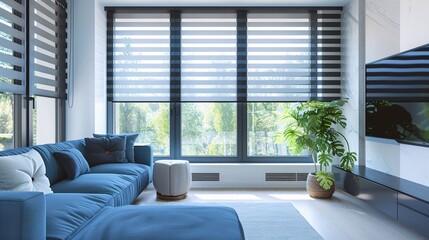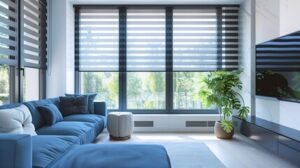Plumber Sarasota plays a crucial role in maintaining modern infrastructure. The complexity of plumbing systems requires specialized skills and knowledge.
Plumbing work goes beyond fixing leaks and unclogging drains. It involves designing, installing, and maintaining water and drainage systems.
Modern plumbing systems have become more sophisticated over time. Water pressure regulation, waste disposal, and heating systems all depend on proper plumbing. A minor issue in one part of the system can disrupt the entire flow. Plumbers must understand the interaction between these components to prevent failures.
The installation process demands precise planning and execution. Plumbers must assess the structure’s layout and the flow of water. The choice of materials affects the system’s durability and performance. Improper installation can lead to costly repairs and damage.
Maintenance is equally important in ensuring long-term functionality. Regular inspections identify leaks, corrosion, and blockages early. Addressing these issues promptly prevents structural damage and water wastage. Plumbers play a key role in extending the lifespan of plumbing systems.
Emergency plumbing situations require quick thinking and problem-solving. Burst pipes, clogged drains, and sewage backups can cause significant damage. Plumbers must diagnose the problem accurately under pressure. Effective solutions prevent further damage and restore functionality.
Advanced plumbing technology has introduced new challenges and opportunities. Smart plumbing systems use sensors to monitor water usage and detect leaks. Plumbers must adapt to these technologies and understand their integration. The ability to troubleshoot smart systems has become an essential skill.
Environmental considerations have also influenced modern plumbing practices. Water conservation and energy efficiency are now key priorities. Low-flow fixtures and greywater recycling reduce water consumption. Plumbers help implement these solutions to promote sustainability.
Plumbing codes and regulations ensure safety and efficiency. Plumbers must stay updated on changes in building codes and environmental standards. Compliance ensures that installations meet health and safety requirements. Knowledge of these regulations protects both property owners and occupants.
Plumbing systems in commercial and residential settings differ significantly. Commercial systems handle higher water volumes and complex layouts. Residential plumbing focuses on convenience and efficiency for daily use. Plumbers tailor their approach based on the specific needs of the structure.
Renovation projects often require plumbing adjustments and upgrades. Replacing outdated pipes, rerouting lines, and installing modern fixtures are common tasks. Plumbers assess existing systems to identify compatibility issues. Proper planning ensures a smooth transition to updated infrastructure.
Water quality management is an important aspect of plumbing work. Filters, softeners, and treatment systems maintain clean and safe water. Plumbers install and maintain these systems to prevent contamination. Protecting water quality enhances both health and system performance.
Clogged drains and slow water flow are common issues addressed by plumbers. Buildup of hair, grease, and debris restricts water flow over time. Plumbers use specialized tools to remove blockages and restore flow. Preventive maintenance reduces the risk of recurring problems.
Leak detection has become more precise with modern technology. Infrared cameras and acoustic sensors help locate hidden leaks. Early detection prevents water damage and mold growth. Plumbers use these tools to improve accuracy and minimize disruption.
Frozen pipes present a unique challenge in colder environments. Expanding ice can cause pipes to crack or burst. Plumbers use insulation and heating methods to prevent freezing. Quick action minimizes the risk of costly damage.
Backflow prevention is critical to maintaining clean water supply. Contaminated water can flow back into the system without proper safeguards. Plumbers install backflow prevention devices to protect water quality. Regular testing ensures that these systems function correctly.
Sewer line maintenance requires specialized knowledge and equipment. Tree roots, blockages, and corrosion can disrupt flow. Plumbers use cameras and hydro-jetting to diagnose and clear issues. Maintaining clear sewer lines prevents backups and structural damage.
Water heater installation and maintenance require careful handling. Improper installation can lead to leaks, pressure buildup, and energy loss. Plumbers ensure proper venting, pressure regulation, and temperature settings. Regular maintenance extends the lifespan of water heaters.
Pressure regulation is essential for balanced water flow. High pressure can damage pipes and fixtures, while low pressure reduces efficiency. Plumbers install pressure regulators to maintain optimal flow. Adjusting pressure improves system performance and reduces wear.
Greywater systems have become more popular for water conservation. Reusing wastewater from sinks and showers reduces demand on freshwater supplies. Plumbers design and install these systems to meet local codes and safety standards. Efficient greywater use reduces environmental impact.
Plumbing emergencies often require creative solutions. Limited access, outdated systems, and environmental factors complicate repairs. Plumbers develop workarounds to resolve issues without causing further damage. Experience and adaptability are crucial in high-pressure situations.
Plumbing work often involves collaboration with other trades. Electricians, carpenters, and HVAC technicians coordinate on complex projects. Effective communication ensures that systems integrate smoothly. Plumbers play a central role in maintaining project efficiency and quality.
Pipe material selection influences system performance and longevity. Copper, PVC, and PEX have different strengths and limitations. Plumbers consider factors like temperature, pressure, and chemical exposure when choosing materials. The right choice reduces maintenance needs and improves durability.
Plumbers face physical and mental challenges in their work. Tight spaces, heavy lifting, and exposure to hazardous materials are common. Protective gear and proper technique minimize injury risk. Mental focus and problem-solving skills enhance job performance.
Training and certification are essential for professional plumbers. Apprenticeships and technical education provide hands-on experience. Continuing education keeps plumbers updated on new technologies and regulations. A well-trained plumber delivers higher-quality work and builds customer trust.
Plumbing inspections ensure that systems meet performance and safety standards. Plumbers check for leaks, pressure issues, and code compliance. Detailed reports identify areas for improvement. Preventive inspections reduce the risk of major failures and costly repairs.
Plumbing work reflects a balance between technical skill and customer service. Clear communication helps clients understand the scope of work and costs involved. Plumbers build trust by providing accurate estimates and timely service. Professionalism and reliability enhance customer satisfaction.
Technology has transformed how plumbers diagnose and repair issues. Digital pressure gauges, leak detectors, and camera systems improve accuracy. Mobile apps allow real-time monitoring of plumbing systems. These tools increase efficiency and reduce downtime.
Safety is a top priority in plumbing work. Exposure to gas, chemicals, and high-pressure water requires careful handling. Plumbers follow safety protocols to protect themselves and others. Proper ventilation, protective equipment, and training reduce risks.
Plumbing also plays a role in disaster recovery and prevention. Flooding, pipe bursts, and sewage backups require immediate action. Plumbers assess damage and restore functionality quickly. Preventive measures help minimize future risks.
The plumbing industry continues to evolve with technological and environmental changes. Smart home integration and sustainable practices are shaping modern plumbing solutions. Plumbers adapt by learning new skills and exploring innovative approaches. This balance of tradition and innovation ensures that plumbing systems remain efficient and reliable.
The essential nature of plumbing work extends beyond functionality. Clean water access and waste management contribute to public health and safety. Plumbers maintain these systems with skill and dedication. Their work supports the foundation of modern living.



